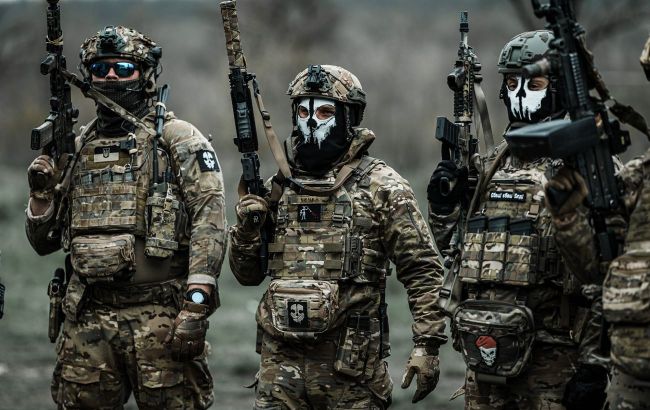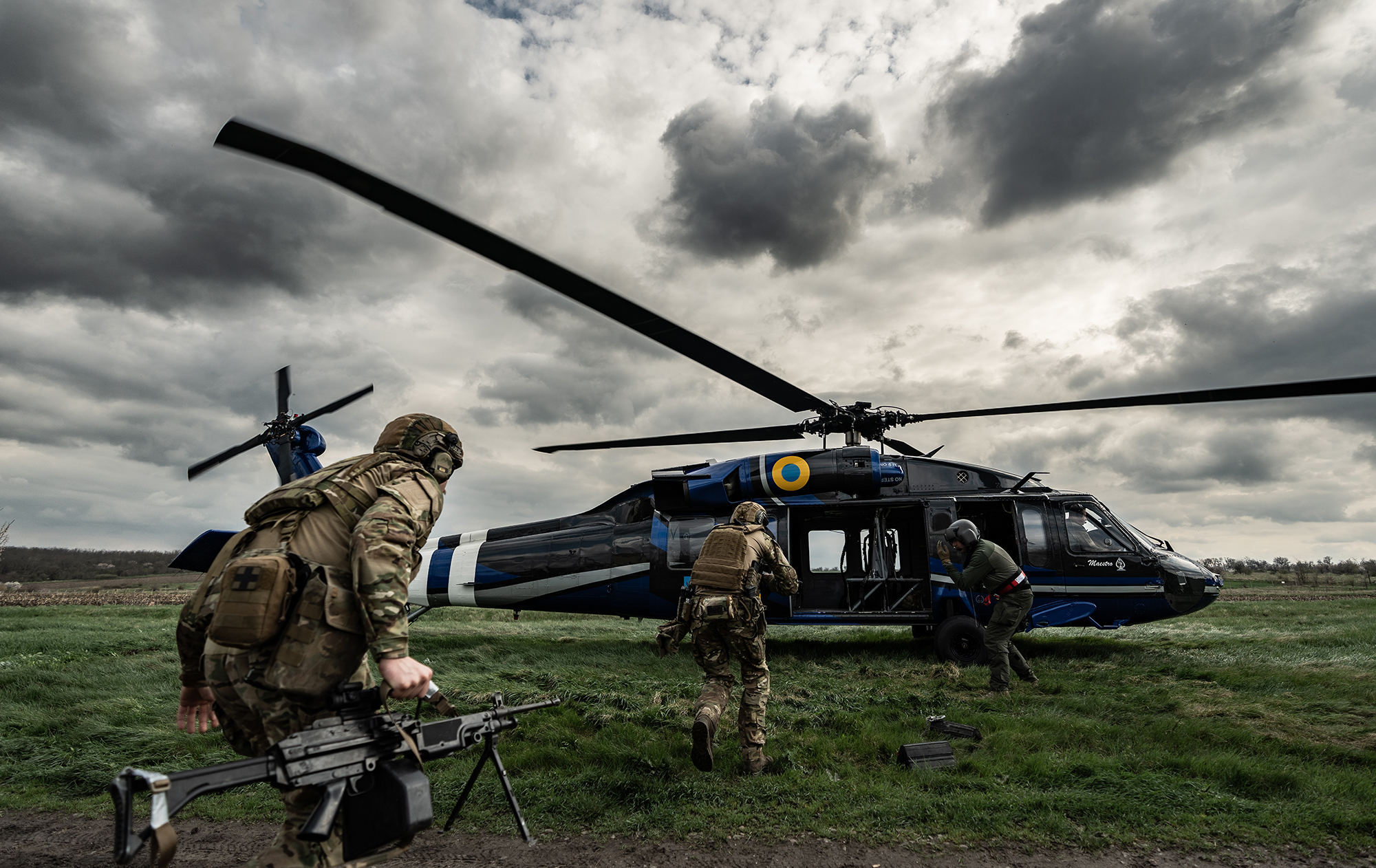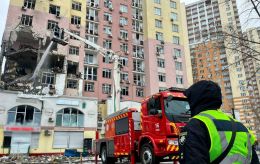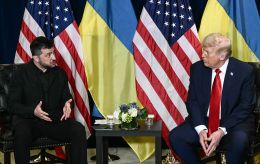Inside Ukraine's secret missions against Russia: Exclusive interveiw with top agent 'Philosopher'
 Members of the Shamanbat active duty unit (photo: GettyImages)
Members of the Shamanbat active duty unit (photo: GettyImages)
The Hero of Ukraine, an officer of the Defense Intelligence of Ukraine (DIU) with a call sign Philosopher, tells about the creation of Shamanbat, Kraken, Artan, and other active units of the DIU, their role during the war, and the operations against Russia in an exclusive interview with RBC-Ukraine
Going to the meeting with the interviewee, we had no idea what his name was, what he looked like, or where our conversation would take place. Due to the specifics of his work and position in the Defense Intelligence of Ukraine, the officer with the call sign Philosopher prefers not to show his face in public. He coordinates the work of the DIU's active action units.
Philosopher began his service in the DIU in the legendary 10th separate Special Forces detachment, which was then headed by Hero of Ukraine Maksym Shapoval. As a member of this unit, he took part in combat operations in eastern Ukraine during the Anti-Terrorist Operation/Joint Forces Operation, defended the Donetsk airport, received the Order for Courage, and was promoted to major ahead of schedule. Then he went on international missions to Afghanistan and Africa, after which he returned to civilian life for a while.
"When Kyrylo Budanov became the Chief of the Defense Intelligence of Ukraine, he first invited me to train some groups. They later became the basis of Shamanbat," says Philosopher. It was the Shamanbat that became the first of the units that are now called active action units."
At the beginning of the full-scale Russian invasion of Ukraine, our interlocutor participated in the battles in the Kyiv region with the Shamanbat. He was one of the first to arrive at the Hostomel airport, coordinating the defense and subsequent liberation of Irpin, Moshchun, and Hostomel. For this, he received the Bohdan Khmelnytskyi Order and the title of Hero of Ukraine. Next came the battles in Siverodonetsk and Bakhmut, followed by new positions and responsibilities.
This is probably his first major interview, in which he shares previously unknown details of Ukraine's operations during the full-scale war and reveals the secrets of the work of special military intelligence units - active action units that work against the enemy both on the territory of Ukraine and abroad.
DIU's active action units: what they are and how they work
Currently, the structure of the Defense Intelligence of Ukraine includes the five most well-known, classic, active duty units, explains Philosopher. These are the International Legion, Kraken, Artan, Shamanbat, and Tymur. The DIU began creating these units in the days when it became clear that war was inevitable and that the Armed Forces would have difficulty meeting new challenges alone. The basis of the current active duty units was the 10th Separate Special Forces Detachment named after Major General Maksym Shapoval.
 Philosopher with other soldiers (photo provided by the source)
Philosopher with other soldiers (photo provided by the source)
"Officers from this unit later became commanders of the current active duty groups and units. There were a lot of initiative people who wanted to resist the Russian aggression. Cossacks were coming to Kyiv from all over Ukraine, and they had to stand under someone's banner. When they met us at different parts of the frontline - Hostomel, Bucha, Irpin, Moshchun - they decided to join our group. They were Aidar members, Azov fighters, police officers, former soldiers, and ordinary civilians - they learned quickly and became officers and commanders, too," explains Philosopher.
Along with the Shamanbat, citizens of other countries also participated in the defense of the Kyiv region. This new project of the Defense Intelligence of Ukraine (which we now know as the International Legion), like Shamanbat, played a significant role in the liberation of the Kyiv region. Today, the Legion continues to perform special missions in various parts of the frontline.
While the Shamanbat was created during the battle for Kyiv, another unit, the Kraken, which is also well-known today, was created in Kharkiv in coordination with the DIU. Former football ultras, veterans of the Azov, and yesterday's civilians, together with officers, made a huge contribution not only to the defense of the city but also to the subsequent operations to de-occupy the region, which is now known as the Kharkiv counteroffensive.
Around the same time, at the beginning of the Russian full-scale invasion, the Tymur unit was created. A little later, in June 2022, the Artan unit was formed.
The specifics of the work of the active action units are quite broad, explains Philosopher. These include defense operations, offensive operations, regaining control of individual objects, sabotage (i.e., destruction of Russian objects), and operations in the deep rear. Compared to other similar formations within the intelligence agencies of other countries, Ukrainian practice is unique in many ways, Philosopher said.
"They have had such units for a long time. But they try to keep their functionality within a narrower range, that is, they perform specific tasks, sabotage work, etc.,” explains Philosopher. "For example, the Main Directorate of the General Staff of the Armed Forces of the Russian Federation (formerly the Main Intelligence Directorate or GRU) is a serious organization that influences the situation not only in Ukraine but also in other areas where Russia operates. But they are in no hurry to enter the battlefield. And when they went to the front line, there were normal linear battles, they were normally poured into them and disappeared from there."
Speaking of the US and UK Special Operations Forces, their functionality is much closer to the active action units of the Defense Intelligence of Ukraine than to the Ukrainian Special Forces, Philosopher says:
"Groups of our Special Operations Forces are now joining the brigades of the Armed Forces to perform certain tasks. And often, when they arrive in the area of operations, the brigade sends them to regain a lost position or to storm a landing. That is, groups of people who have been trained for a long time, who have a different function, who have skills of a different level, are simply destroyed in that landing - this is a rather inefficient use of this kind of unit."
According to Philosopher, the DIU's active action units, unlike the Special Operations Forces, are more independent in their ability to plan operations and use them. This was the logic behind the creation of such units in the intelligence agency - having information, and being able to plan and implement an operation:
"The DIU is essentially an information hub for the entire Defense Forces of Ukraine. When you have all the information about the enemy, you can plan individual measures that can affect the situation at the front. But planning is one thing. Being able to implement it is a completely different story. That's how we came up with the idea that we needed tools to implement our plans, and that's what the active action units became."
This approach has been maintained by the DIU to this day. In addition, when Philosopher became the coordinator of the active action units, he decided to significantly expand the level of autonomy of some of them, in particular, Artan, Kraken, and Shamanbat.
"We directly plan all our operations, create annual plans, analyze the current situation on the battlefield, and forecast the future situation. Based on this, we determine in which areas our units should be deployed and what tasks need to be accomplished there," Philosopher said.
Achievements and impact
RBC-Ukraine's question about the top three operations of the DIU slows down the lively pace of our conversation. At first, after a moment's hesitation, Philosopher says that he is proud of all the operations conducted by the active action units. However, when asked to single out those that had the greatest impact on the course of the war, he names four. The first is the Battle of Kyiv.
"The battle for Kyiv is important because if we had lost the capital, our entire defense and war effort would have ended there. I believe that the Defense Intelligence of Ukraine made an invaluable contribution to the defense of the Kyiv region."
The second operation is the Kharkiv counteroffensive, which is no less important, not only in the military but also in the ideological dimension.
"Everyone remembers the history of the national liberation struggle of the early twentieth century. How the Bolsheviks formed a puppet government in Kharkiv that allegedly spoke on behalf of ordinary people and all that. I think if the Russians had managed to capture Kharkiv, they would have done the same thing again. Therefore, it was critically important not to lose this city. And the Defense Intelligence of Ukraine (in particular, the Kraken unit) made every effort to ensure that the city survived," the source says.
The third is the de-occupation of Zmiinyi Island. According to Philosopher, not everyone understands the significance of the liberation of this small island and its impact on the war.
"If you look at the map, you can see that at that time the line of Russian control in the Black Sea stretched along the entire coast of Ukraine, up to Romania. The entire water area was closed to us. But when Zmiinyi is Ukrainian, where is that red line? That's right - it has shifted to Crimea. Today's trade routes, the grain corridor - all of this has only started working because Zmiinyi has been returned to Ukraine. This is a strategic level of tasks performed by the active duty units," explains the scout.
 Servicemen of one of the active duty units during training (photo: GettyImages)
Servicemen of one of the active duty units during training (photo: GettyImages)
Separately, he mentions another operation about which there was very limited information in the public sphere - the operation in Enerhodar in 2022. In the story of Philosopher, it occupies a special place, both in its essence and in its strategic consequences.
In essence, it was the first operation on the water for the active duty units (a marine operation according to the American classification). Strategically, thanks to the DIU's actions, the intelligence officers managed to draw back a Russian group of about 10,000 personnel.
"And this, in turn, allowed us to conduct serious offensive operations in the fall of 2022 and liberate a large area of our territories, in particular in the Kherson region. At that time, we stretched the front for the Russians, and they urgently had to move more troops there, which was completely incompatible with the number of our people involved in this operation. This is a difference of ten times," Philosopher recalls.
About war, changes, and threats
Since 2022, the Russian army has changed significantly, Philosopher continues. "We are all evolving. And the Ukrainian army has evolved a lot, and the Russian army, unfortunately, has too," the source states. He is also talking about the acquisition of new technologies and new tactics.
He explains that in 2022, the Russians were confident that no one in Ukraine would resist, so their actions were targeted and deep, meaning there was no solid front. Russia did not fully realize that they would have to fight seriously, so they suffered huge losses.
"Eventually, the Russians were forced to withdraw from Kyiv. Then they were physically in a large area of territory, but they had neither logistics nor actual control. They scattered around Kharkiv. Then Ukraine crushed them in the area of Kherson. When the Antonivskyi Bridge was destroyed, Russian troops were cut off from the left bank. And they started to panic. When they were unable to carry out normal logistics, they lost control, initiative, and confidence and withdrew,” adds Philosopher.
Then their tactics changed. The Russians began physically destroying cities, such as Bakhmut, with heavy artillery fire and using meat assaults - a tactic that Wagner PMC used on a large scale at the time. This was also due to the Russians' lack of equipment, which was intensively destroyed by Ukrainian drones.
"Today, when Russian troops arrive, they fight according to the classical method: they drive in with equipment, unload, take key positions, then more troops arrive and they take the next positions. At this time, these columns are constantly on fire. But some of them manage to slip through, they reach a critical mass, knock us out and push us back," the source says.
At the same time, the Russian army has many units that are currently fighting in small groups. Since they have significant problems with equipment, some of them go on assaults on ATVs, others on foot through the forest. This is how they try to push forward every day, says Philosopher and, after a bit of thought, adds: "Their tactics do not change. They have human resources and they use them, the main thing is to achieve the goal of killing a thousand soldiers in a thousand meters. But someone will crawl and take that position. These are the two tactics of the Russians today - with and without the use of equipment. However, the Russian army, no matter what anyone says, is quite professional."
And unfortunately, this threat in the form of Russia will not go away. Therefore, says Philosopher, although the Ukrainian army has also become significantly stronger in recent years, its development will need to continue after the war is over.
"Our country has a specific attitude to the Armed Forces and the power bloc in general. The war came, and everyone remembered what the Armed Forces were. When the war is over, we will again have a lot of other problems, and Russia will not go anywhere. If the war is over, we have to keep this idea alive," Philosopher emphasizes.
He cited the example of the Finns, who last fought with Russia in 1939. However, they still have equipped bunkers, have built a defense, and train their reserves. Philosopher sees a risk that after the war, Ukraine's agenda may slip to internal problems, forgetting about the real threat:
"We will need to continue building our army. We have a national identity and we need to preserve it: we are Ukrainian-speaking, Russian-speaking, we speak other languages - but we are all Ukrainians. The active action units created in the DIU are specific. The tasks they perform are not very specific to the DIU, but these units exist. And they need to be built and systematized, and they will never again allow Russia or anyone else to attack our country and seize anything. Who will be the best peacekeepers for us? Our own Defense Forces."

